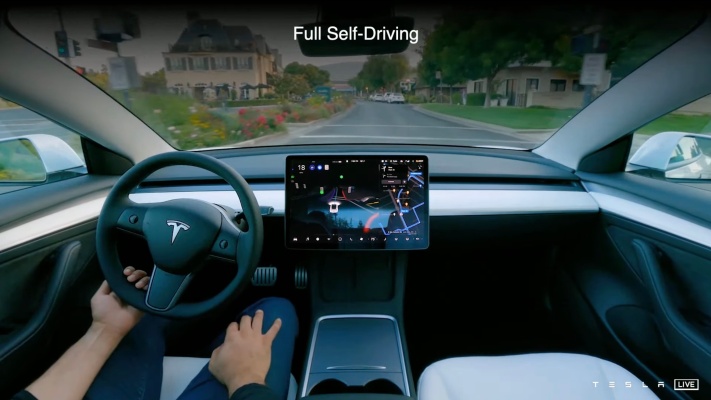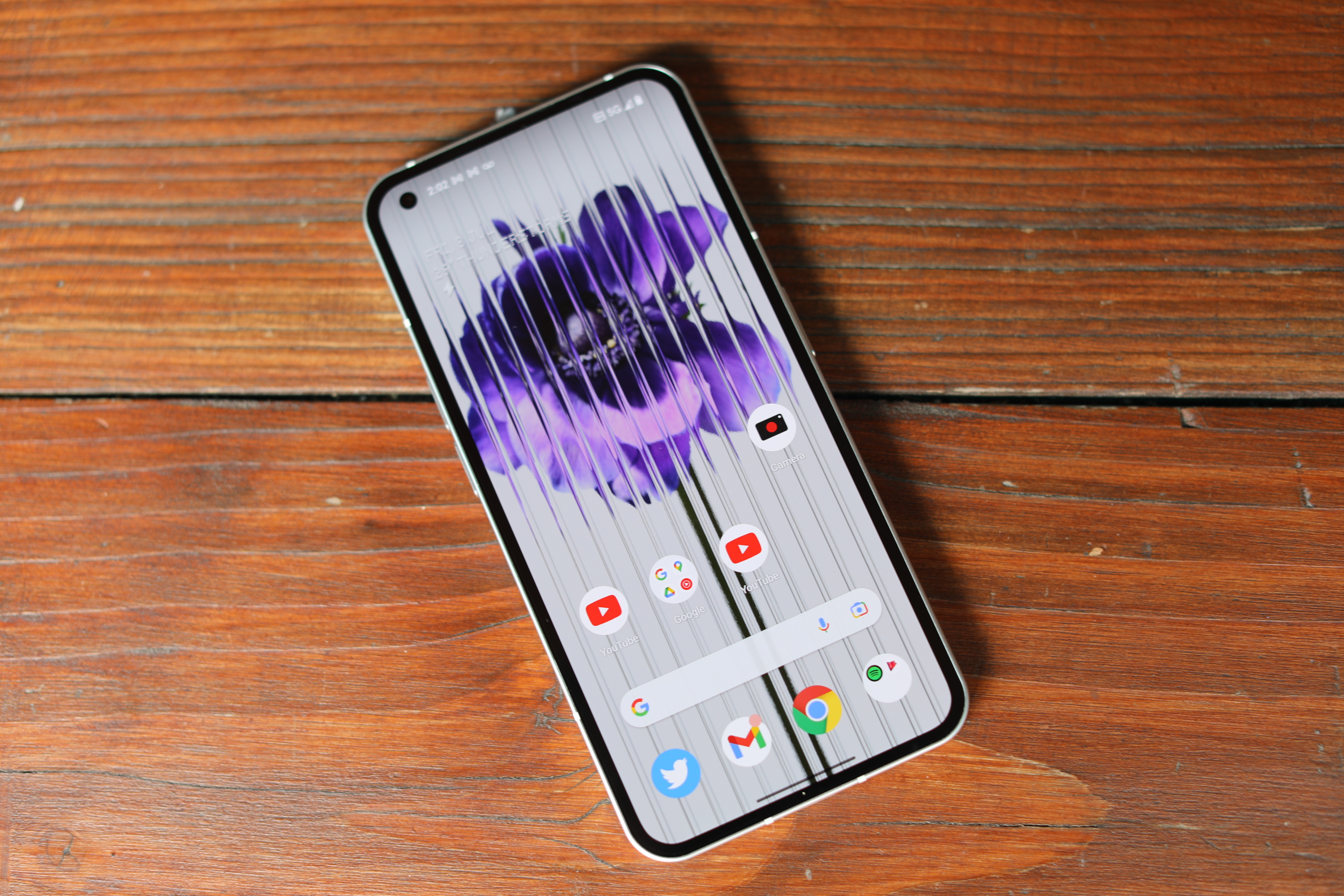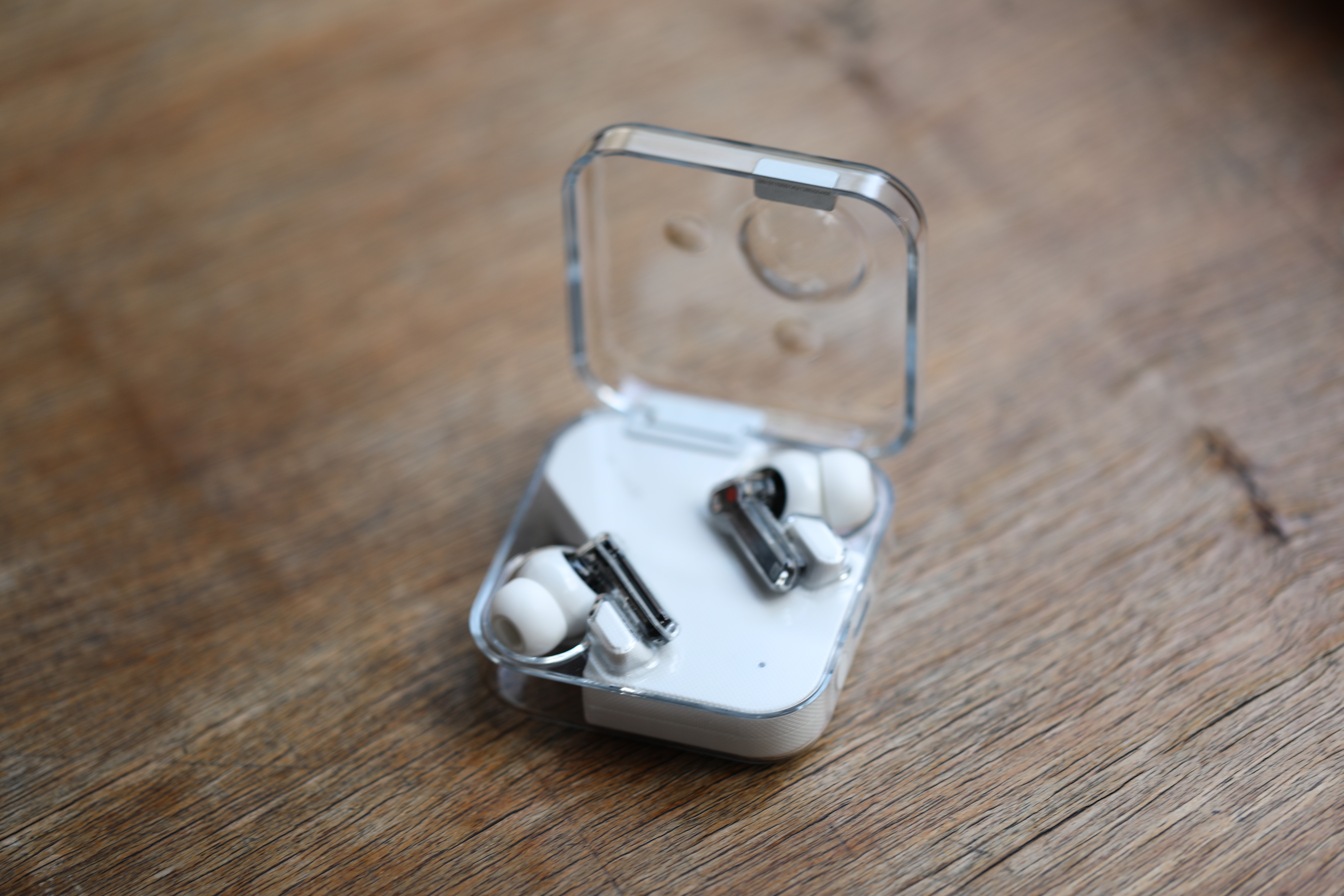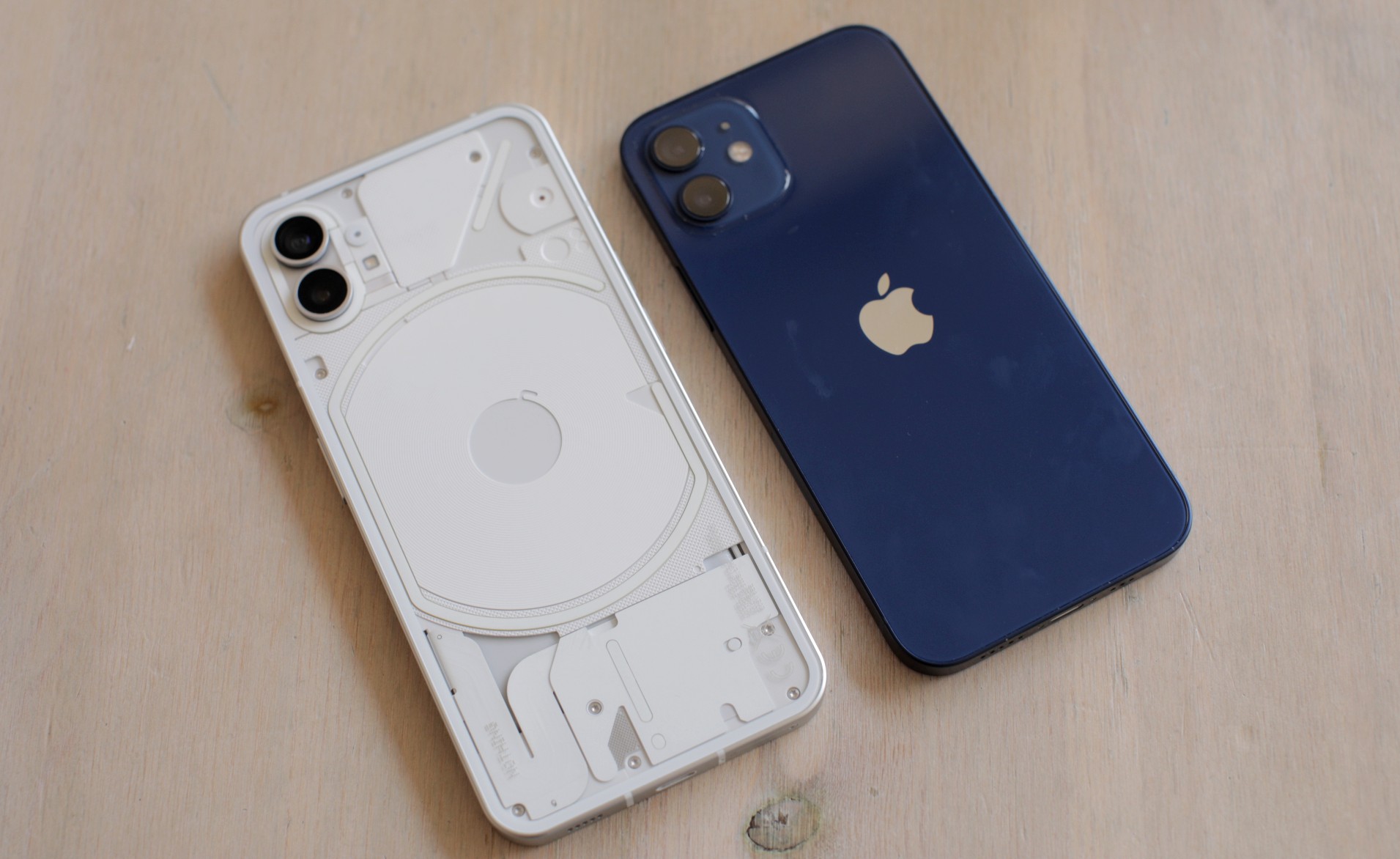
Tesla pauses rollout of Full Self-Driving beta software
March 2, 2023
Brinc’s Lemur 2 straps on blue strobes and is ready for action
March 3, 2023
Nothing’s presence stood in stark contrast to OnePlus at this year’s MWC. Whereas Carl Pei’s old company, OnePlus, put on a flashy launch event for a concept device yesterday, Nothing has largely used the event to meet with vendors and other big names in the industry.
We sat down with Pei yesterday, fittingly in a meeting room inside the Qualcomm booth. Among other things, the CEO confirmed that the Nothing (2) will be powered by the Snapdragon 8 series chip — not that the topic was ever up for much debate.
The conversation — which touches on the U.S. and India markets and the smartphone industry at large — began with a quick exchange about the OnePlus concept phone. Earlier teasers of the device drew comparisons to Nothing’s first handset, the Phone (1). “People were tagging me,” Pei says, while acknowledging that the device’s illuminated cooling liquid is a distinct approach from his phone’s Glyph lighting scheme.
CP: There’s [a] company at MWC called UniHertz. A very small company. They made a carbon copy of the Phone (1). I’m gonna go check it out.
TC: Congratulations. That’s a rite of passage.
We recently worked on our vision statement. It’s, “We want to make tech fun again.” So, if we can inspire our industry to start experimenting more, that still helps with the vision.
There’s experimenting and there’s copying. Are you going to go be litigious?
No. They’re so small. That doesn’t really help anybody.
The smartphone market was on the decline before the pandemic. It got a bump from 5G and then declined again. At some point 6G will happen, but I don’t see something like foldables driving the market in a profound way. Will the market rebound? And if so, how?
The smartphone market grew initially because there was a really innovative product that was useful to customers. Now it’s starting to shrink, because my phone is good enough. Why should I upgrade?
It’s also too expensive to upgrade every two years.
Yeah. I think it’s natural that unless there’s some really useful innovation, it’s going to steadily decline. Having said that, it’s still a really big industry. It’s still very lucrative from a business perspective.
So, you don’t see anything on the immediate horizon that will profoundly drive sales?
Not profoundly. For us, we’re trying to do more and more as we build up our engineering capabilities. We weren’t able to do too much on the software side the first year. But now that we have our own team, we can start doing more and more, but it’s not going to be game changing. I don’t think in the next generation, but we’re steadily introducing something new and useful, I think. But I don’t see that iPhone moment on the horizon moment anymore. Not in the next two to three years.

Image Credits: Brian Heater
There may not be one. That was the ur-moment for phones.
Yeah. I think something around AI might be the next iPhone, but I haven’t really figured out the application.
You’re talking about AI on the phone?
No, AI as a technology to help people in general.
Obviously there have been some applications for AI on the phone, mostly for photography.
Yeah. But AI on the smartphone has only given us like 10% improvement. The picture quality is 10% better, but it doesn’t change how we interact with technology.
What are your feelings on foldables?
I personally think foldables are supply chain-driven innovation and not consumer insights.
In terms of having that initial breakthrough and then building devices around it?
Think about it from a supply chain perspective. Somebody invents OLED, and they can make a lot of money, because it’s a great technology. Then after a few years, a lot more companies make that, so they need to lower their prices. So they need to figure out what else they can sell at a higher margin. They develop flexible OLEDs, which they can sell at a higher price. Then they go and pitch it to the smartphone vendors. “We have this nice foldable, please use it.”
In Samsung’s case, they developed the technology in-house and built the device around it. As far as I can tell, they still own the vast majority of that market right now.
Foldables [don’t] come from solving customer pain points, but it’s getting better and better. That’s great, but it’s probably not going to be something we’re going to look at.

Image Credits: Brian Heater
So, we shouldn’t expect a foldable from Nothing?
No.
There’s some talk of 6G at this year’s event, but it still feels pretty far off. What’s your sense on where the technology is?
I don’t know anything. I think for us it’s not where we need to leave. We just follow what the industry trend is on the network side. We need to lead where we can be different. If we ask our users why they bought the earphones and smartphone, the number one reason is design. So, how can we get stronger on that? Not just the hardware design, but to also adapt that to our software? So everything feels holistic. And then, how can we make our technology more useful? We have the Glyph interface on the back that looks quite nice, quite interesting. But we’ve got a lot of feedback that it wasn’t that functional. How can we build more and more functionality that’s actually usable?
In this case, you adopted a technology specifically for design reasons and then started looking for use cases?
It’s a mix, because we had a roadmap for features of the Glyph interface. But that roadmap has been executed on very slowly, because we didn’t have the engineering needed.
How big is the team now?
We’re 410. Still very small.
How many are in engineering?
Probably 350.
The vast majority.
Yeah, unfortunately, the smartphone is a very complicated product, so you need a lot of engineers.
Is Nothing profitable?
As a hardware business in a competitive market we have now sold 1,000,000 Nothing products and counting in just over two years. Whilst Nothing won’t be profitable in its early days, our revenue grew tenfold from 2021 to 2022.
What can you tell me about the Phone (2)?
We’re going to be using the [Snapdragon] 8 series. Earlier, I said it was going to be a premium device. But we’ve never officially acknowledged whether it’s Qualcomm or MediaTek.
Was that ever up for debate? MediaTek is good, but Snapdragon is the clear choice for most flagships.
Qualcomm has been a really good partner. From the very beginning, when we were starting the business, there was a chipset shortage, and they gave us allocation at a good price. Today it’s different. There’s now an abundance of chipsets in the market, but they’ve been a strong supplier. And their product’s not bad, so we never really considered another option, especially for a more premium device.
Is there anything else you can share on the Nothing (2) front?
We’ll have a much stronger focus on software. With our engineering in-house, there’s a lot more we can do. We have a more robust roadmap, both in terms of design and how we can make it more useful.
Given the amount of time and money that went into R&D, will the design be similar to the Nothing (1)?
In terms of cost it will probably be similar.
And in terms of design language?
That I can’t really comment on.
How did the beta go in the U.S.?
It went very well. We’ve done over 2,000 already. We shut it down. It’s enough to get feedback for the beta. I think we did 2,500 before we closed it and it’s not even a new phone.
It’s half a year old, but it’s been much harder to get in the U.S.
Yeah, but it doesn’t really support all the bands in the U.S., either. So you sometimes get 4G, or sometimes you get no signal.
A limited release like that does serve the purpose of drumming up excitement. But given that the phone was already released in other parts of the world, what’s the purpose of the beta in the U.S.? Is it different from the feedback you get in Europe?
We wanted more users to give feedback, and U.S., Europe and India users are different. I think the U.S. consumer is more focused on the experience, whereas Indian consumers more focus on the functionality, the feature set and the specs.

Image Credits: Brian Heater
What’s the difference between experience and functionality?
U.S. users would be able to talk about user experience bugs, or what didn’t work, versus “Hey, why don’t we have this thing?”
Why didn’t it launch in the U.S.?
Engineering resources.
For the bands?
Okay, actually, two reasons. One is to add additional bands in the U.S. [but that] increases the cost of the product for all our regions around the world because we have a single SKU. So if we add everything we needed for the product, it became more expensive in Europe and India as well, but they had no benefit. And the second is our internal engineering. We just didn’t have enough engineering to support the different certifications that we needed to deal with some of the carriers.
Are the bands similar in India and the U.K.?
Yeah, basically.
India is a huge market — the number two in the world. Is that why it was one of your first countries?
There was a strong affinity for OnePlus in India. From a consumer side, we knew there was interest in what we were going to build, and from the partner side, from the sales channel side, they believe in our team based on what we did in the past, so they will support us again on this new journey.
I see a good long-term potential, yeah. And then the market this year, India’s economy is going to grow by 6%. And a lot of economies are shrinking. They still have a lot of growth ahead of them as a nation. And also they have a very young population, and I think the middle class . . . will keep growing in size, whereas maybe in Europe, it will decrease in size.
Apple and others focus their budget devices on the Indian market. Did you consider doing a second variant?
We did but I think that’s the easy way, but it also has long-term negative repercussions. For yourself as a company, if consumers only buy you because you’re cheap, then what’s your business model? A company needs to be profitable. So if you’re cheap today, then tomorrow somebody else can be even cheaper. And then this is like the fight for whoever makes the least amount of money or even loses money. So I think we’re taking a much more difficult route; we need to make our products different. And we need to create things that are useful for the customer. And we’ll know if it’s useful if they want to pay for it. It’ll be slower this way, but I think we’ll have a much stronger brand and much stronger product in the long-term if we do this, and also a healthier company, in terms of profitability.
Do you have any operations in India?
We have manufacturing in India. About half of the phones are made in India, and half in China. We’re building a manufacturing team in India to manage the factory. We have sales and marketing over there. And we have testing for some of our software and aftersales.
The U.S. is looking to move more U.S. product manufacturing back to its own market. Is that something you would pursue at some point as a U.K. company, manufacturing in the U.K.?
Probably not. I think this would need government policy support, and I don’t think the U.K. government has a plan there.
The U.S. seems to be injecting a ton of money into that.
I think India has a Made in India program, and the Middle East is starting to look at how they can diversify away from oil. I don’t think Europe in general has a plan for where they’re going.
Pricing is obviously a big part of it. I see companies moving from Shenzhen to Vietnam or Mexico.
I think the U.S. is not that expensive. Real estate for manufacturing is cheap compared to other places. The labor cost is higher, but the efficiency is also higher. So it kind of evens out.
How aggressively are you looking at APAC?
I think the China market is very competitive in an unhealthy way, as in it’s like a race to the bottom who can deliver the most amount of specs and features at the lowest possible price. And I think a majority are losing money in China.
And you’d be competing with these huge companies with so many resources.
I think, long-term, all the companies will become rational. When people are rational, we can consider entering the market. But it’s very irrational now. And also, if you want to operate in China, you need to have another software team because Google services are not there, so you need to build your own services. We just can’t think about all those things right now.

Image Credits: Brian Heater
What does your roadmap look like? OnePlus started small and has gradually grown its scope. Are you looking to ramp up the product release cadence for Nothing, too?
Not very aggressively, because we want to create iconic products, and we want to support the products well, in terms of software. If you make like 10 or 20 phones a year, then it’s really hard to provide that level of support. It’s almost like you get a round of consumer interest for every new product. Like that always comes. So it’s kind of like a drug that you’re addicted to. You want to keep releasing stuff. But I think if you take the harder route, the more healthy route, they really figure out the product itself.
Phone-wise, a yearly cadence makes sense.
I can’t really comment on that right now. But I think if you look at the Phone (1), there’s actually still a sustained level of consumer interest, half a year after the launch. That’s becoming more and more rare in this industry.
Any new product categories this year?
Yes.




